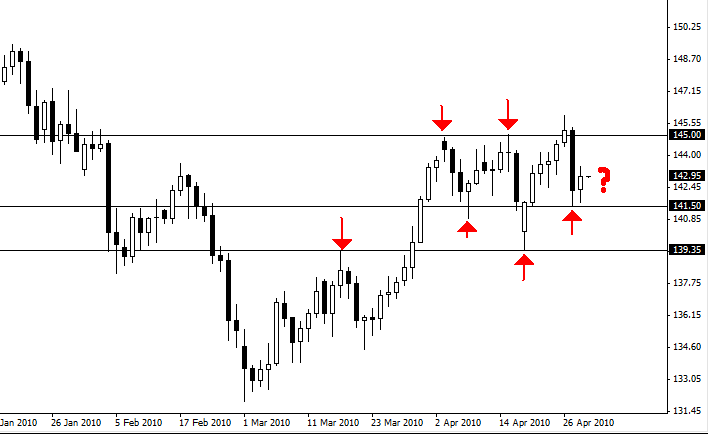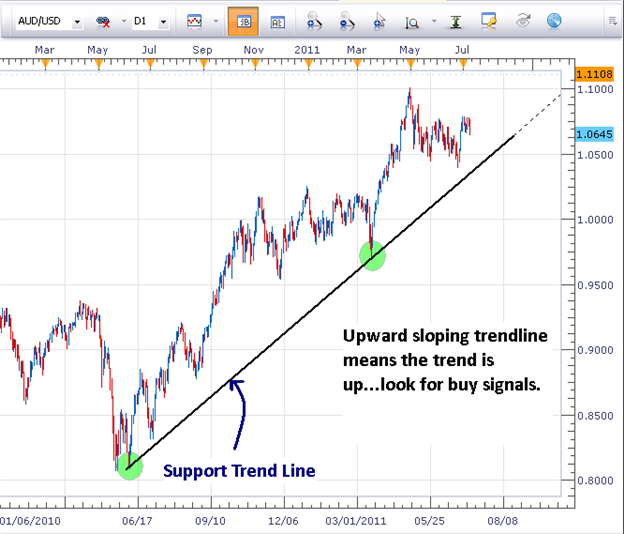How to Draw Forex Support and Resistance
Post on: 16 Июль, 2015 No Comment

Nearly every single technical based trading system will rely on you the professional Forex trader, having the ability to correctly draw support and resistance levels on your Forex charts. Mapping out support and resistance is going to be the most important core skill for any serious trader. If you cant draw your support and resistance levels accurately, then your trading as a whole may implode violently.
Something built on a weak foundation will eventually crumble
Its vital when you learn to trade Forex. that you focus your attention and really master the skill of identifying the important support and resistance levels. Your ability to spot crucial support and resistance levels in the market with your own eyes, on raw price charts, will be a major determining factor in how successful you are as a trader!
Stop Over Complicating Support & Resistance
The issue most traders have with the whole process is they tend to over complicate their approach to marking support and resistance levels leaving themselves with a very messy, confusing and hard-to-read price chart.
Sound familiar?
The reasons most Forex traders get lost, is because they believe their chart analysis needs to extremely in-depth in order to gain an edge over other Forex traders in the market. With this sort of mentality, traders are really driven to go overboard when they zero in on their support and resistance levels. Have a look at the chart example below its a classic example of a Forex trader who takes marking support and resistance a little too far!
This Forex trader has created an environment that is not practical and just down right too difficult to work with. There is absolutely no need to over analytical like this its extreme overkill. If your chart looks anything like this I am here to help!
If you are working with a Forex chart polluted with meaningless support and resistance levels, and other unnecessary variables like trend lines, or even a stack of indicators making a confident trading call is going to be: hard, stressful and make you suffer regular anxiety attacks. It will draw you into a trading mind-set that causes your to act on emotion, not logic or probabilities.
So, what I am essentially saying here is that you dont need to go crazy with marking out support and resistance levels. In fact, you only need to mark out the significant levels that are surrounding the current price movements at the current point in time. In some cases we will only have 1 line marked on our charts as you may have noticed in our Forex market commentary.
You will find in most situations you only need to have that one level marked out to clearly map out, and read the situation on a price chart. Seriously, anything over 3 lines marked on the chart would start to be considered too busy in my books. By only marking out the important levels to watch, you will keep your charts tidy, simple and easy to read. This gives the price action much more clarity, and makes identifying & anticipating future price movements much easier.
Understanding support And resistance
Support and resistance levels are proven price areas where buyers and sellers find some form of equilibrium, and generally a shift of power between buyers and sellers occur that generates the price reversal. Therefore true support and resistance levels are the key turning points in the market. Price doesnt move in straight lines as you are no doubt well aware of price swings up and down, creating new swing lows, swing highs or re-tests existing ones. The more often price does this stop and reverse action at a specific level, the ‘stronger’ or more’ significant’ that particular S/R level becomes.
It’s also worth noting that support and resistance levels that visible on the higher time frames are considered to be higher in value. The general rule of thumb is; the higher the time frame the more significant the S/R becomes. When mapping out support and resistance lines, we work on the daily time frame as an absolute minimum. I recommend using weekly and monthly charts to mark out the more significant or ‘major’ levels in play. These weekly and monthly levels are really good areas to watch out for strong candlestick reversal signals, like the pin bar reversal .
Intraday levels are generally not worth worrying about, price cuts through these like a hot knife through butter on a day to day basis. This is one of the reasons intraday or ‘day trading’ is much more difficult and has a very low success rate. Youre definitely trading on a shaky foundation when you hone in, or focus your analysis on those lower time frames, its not worth it.
Lets get a little bit more practical; Support is an area on the chart where the market demonstrates strong buying action, easily identifiable by price ‘bottoming out’ caused by bearish price action movement being overrun by bullish pressure at a consistent price level on the charts. Support is often referred to as the ‘floor’ that price bounces off, or has trouble moving past to the downside.
Resistance is the opposite of support its where you see price ‘topping out’ as the bullish price action movement is consumed by bearish activity at consistent price levels on the charts. Resistance is known as the price ‘ceiling’ that the market tends to falls off, or has difficulty pushing through to the upside.
Support and resistance is fairly simple to understand when you look at ranging markets they make up the major boundaries of a range-bound charts. When a market is range-bound, the only levels you really need to have marked out is the upper resistance ceiling and the lower support floor of the range. We recommend to only trade price action signals from these main upper and lower boundaries. Short signals are valid at range resistance, and long signals are to be targeted at the range support.
Trending Markets
Trending markets are identified by using swing patterns, broken down into higher highs, higher lows, lower highs and lower lows. These key points are called swing highs and swing lows, and the order they flow in can help identify trends, especially in their early stages.
During a bullish trend, price will step upwards in a zig-zag type pattern. Price will gradually step its way higher forming a staircase structure on the chart. Higher highs (or swing highs) in bullish trends is where the market finds resistance, higher lows (or swing lows) is where the market finds its footing (support) and trend momentum kicks back into the next higher high. During a downward bearish trend, the opposite is true.
Notice the staircase type zigzag upward motion price is finding support and resistance at the swing highs and swing lows as it moves in the general upward direction.
In trending markets, the key levels that we recommend to mark and watch are the ‘Swing levels’, you may have heard of swing trading. These are the areas of the chart where old resistance turns into new support, or vice versa. Price Action signals that generate off swing levels, during trends have a high success rate. There are two main reasons for this; Firstly, there is already trend momentum backing the trade, secondly a swing level, which we know is a key turning point in the trend, adds to the chances that the trade will move in your favor.
Here is an example of a bearish trend and its related swing levels.

In this downtrend we have marked out the swing levels (where old support levels have turned into new resistance).
To summarize; during trending markets it’s the swing levels that are most important to have mapped out on your chart because they are the key turning points in a trending environment. During range bound conditions it’s only vital to have the upper resistance and lower support marked out as these are the key areas of interest during ranges.
The Weekly and Monthly Levels
On a larger scale, strong weekly and monthly support and resistance levels should be marked on your chart when the current price is the vicinity, or approaching those levels. Support and resistance levels viewed from this timescale are major turning points in the market, and want to be paid close attention to. Strong daily price action signals that occur at significant weekly or monthly S/R can be the catalyst for a strong reversal move and a very profitable trade.
In the GBPUSD chart above, you can see how this support level was acting as strong weekly support, and had been a key turning point in this market. Now price has broken through this important level, the best course of action is to wait and see if the market will now respect this old weekly support as new resistance. We can confirm this if a bearish price action reversal signal forms when price retests the old support. Its all about letting the price action tell you where it wants to go.
In the examples above, weve identified the key support and resistance levels on the chart without cluttering up the template with any indicators, trend lines or other chart tools. Only mark out the important levels that market is currently reacting with at the present time.
No one cares about support and resistance from 10 years ago just concentrate what’s going on in the now because support and resistance levels do change over time. The market is not static, it’s a dynamic environment. Support, resistance & swing levels will change as the market dynamics change. By marking only the levels the market is respecting at the present time keeps you in tune, and makes it a much easier task to make logical trading decisions based on what a simple price chart is communicating.
A few points to remember from todays tutorial
- Mark upper resistance and lower support in range bound markets
- When price breaks a support or resistance level mark it on your chart and wait for a signal to confirm it as a new swing level
- During trending conditions mark higher highs and lower lows and wait for them to be confirmed as a swing level via a price action signal or a price bounce.
- Mark the support and resistance levels on your chart that are dominant on the weekly and monthly chart, but only around the area where current price is located.
- Remember the higher the time frame, the higher the significance, the higher chances are of success.
I truly hope today guide to support and resistance has given you some new insight on how to structure your charts, and plan your trades more effectively. The ability to draw support and resistance correctly is learned over time, and patience so dont give up. If youve stuck with a crowed price charts, overloaded with a horde of support and levels and indicators to boot then youre going about it the wrong way. Scrub your chart clean, start again and keep it nice and simple.
Acquiring the skill of marking out support and resistance is obviously super important for any Forex trader but weve only scratched the surface here today. If youre serious about learning how to read plain price charts with support and resistance to anticipate future price movements and make high probability price action trade you would greatly benefit from our war room membership for price action traders. The War Room is our private membership area where you will learn how to trade with price action professionally, and gain access to advanced war room only material like our 1 hour video presentation on identifying and using support and resistance levels.
I hope to see you on the other side, cheers to your future trading!














